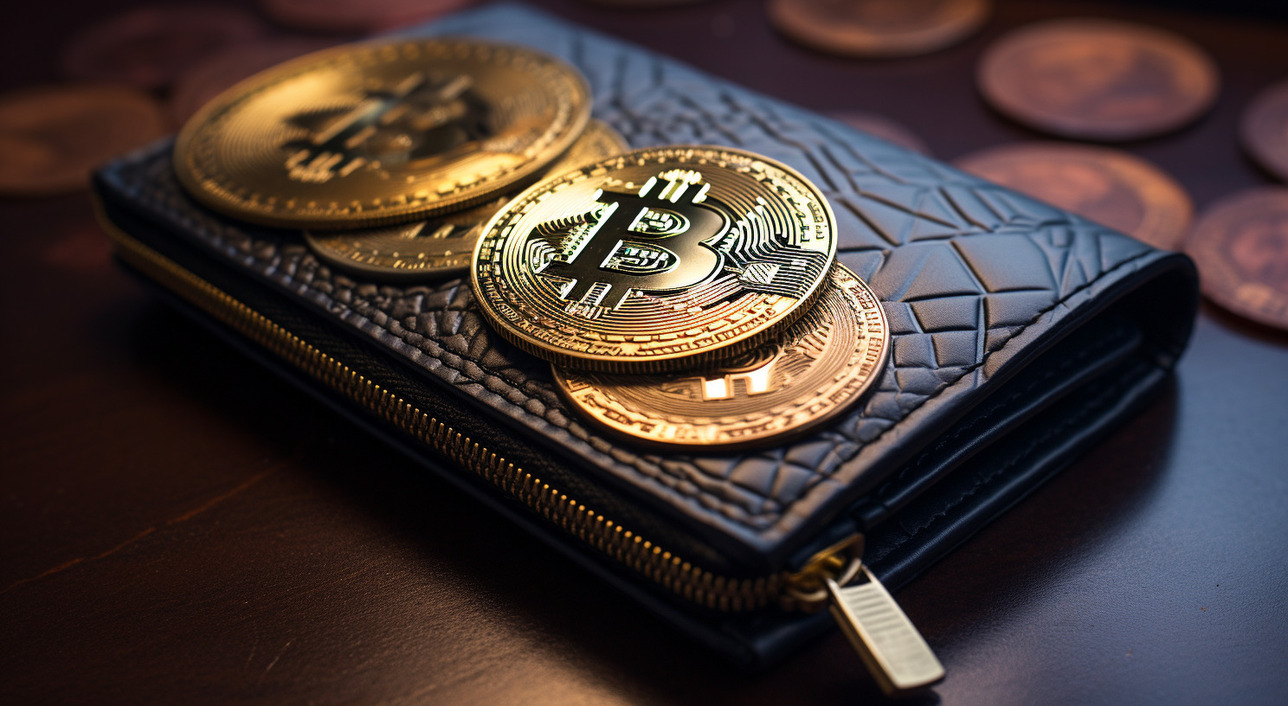Understanding the Role of a Bitcoin Wallet in the Digital Economy
Bitcoin has redefined the concept of money, introducing a decentralized, borderless, and secure alternative to traditional currencies. However, to safely store, send, and receive Bitcoin, you need a Bitcoin wallet. This essential tool acts as a digital gateway to your cryptocurrency holdings, enabling you to manage your funds while ensuring their security.
A Bitcoin wallet is more than just a storage solution; it’s the key to accessing your Bitcoin on the blockchain. Without it, you cannot perform transactions or safeguard your digital assets. This guide will help you understand the different types of wallets, how to choose the right one, and how to set up your first wallet step by step.
What Is a Bitcoin Wallet?
A Bitcoin wallet is a digital tool designed to store the private and public keys required to access and manage your Bitcoin. While it’s often compared to a physical wallet, a Bitcoin wallet doesn’t store the actual currency. Instead, it holds the keys that allow you to interact with the blockchain, where all Bitcoin transactions are recorded.
Key Components of a Bitcoin Wallet
- Private Key: A unique string of characters that allows you to access your Bitcoin. This must be kept secret, as anyone with your private key can control your funds.
- Public Key: This is derived from your private key and acts as your Bitcoin address, enabling others to send funds to your wallet.
Types of Bitcoin Wallets
Bitcoin wallets come in several forms, each offering varying levels of convenience, security, and functionality. The three primary types are:
- Hot Wallets
Hot wallets are connected to the internet, making them ideal for everyday transactions. Examples include mobile apps, desktop wallets, and web-based wallets. While they offer convenience, their internet connectivity makes them more vulnerable to hacking. - Cold Wallets
Cold wallets are offline storage solutions, providing greater security against cyber threats. These include paper wallets (printed keys) and hardware wallets (physical devices). Cold wallets are best suited for long-term storage and holding large amounts of Bitcoin. - Hardware Wallets
Hardware wallets, such as Ledger Nano X and Trezor Model T, are specialized devices designed to store private keys offline. They combine high-level security with user-friendly interfaces, making them a popular choice for both beginners and seasoned investors.
Each wallet type has unique features and trade-offs, which we’ll explore further in the next section.
Choosing the Right Wallet for Your Needs
Selecting the appropriate Bitcoin wallet is critical, as it affects the security and accessibility of your funds. Your choice should align with your financial goals, risk tolerance, and technical expertise.
Factors to Consider When Choosing a Wallet
- Security: If you plan to hold a significant amount of Bitcoin, prioritize wallets with robust security features such as offline storage and two-factor authentication.
- Accessibility: Decide how often you need to access your Bitcoin. Hot wallets are suitable for frequent transactions, while cold wallets are ideal for long-term storage.
- Ease of Use: Beginners may prefer wallets with intuitive interfaces, while advanced users might opt for wallets that offer greater customization and control.
Comparing Wallet Types
- Hot Wallets: These wallets, such as Trust Wallet and MetaMask, are convenient for small, day-to-day transactions. However, they are more susceptible to online threats due to their constant internet connectivity.
- Cold Wallets: Cold wallets, including paper wallets and hardware devices, provide the highest level of security by storing your keys offline. While they require more effort to set up and use, they are ideal for securing large holdings.
- Hardware Wallets: Hardware wallets offer the best balance between security and convenience. Brands like Ledger and Trezor provide encrypted storage and additional features such as password managers and multi-currency support.
By evaluating these factors, you can choose a wallet that suits your needs, whether you’re a casual user or a long-term investor.
Step-by-Step Guide to Setting Up a Wallet
Setting up your Bitcoin wallet may seem daunting at first, but the process is straightforward with the right guidance. This section provides a detailed walkthrough for both hot wallets and hardware wallets.
Setting Up a Hot Wallet
- Download and Install a Wallet App:
Choose a reputable wallet app, such as Trust Wallet or Exodus, and download it from an official source like the Google Play Store or Apple App Store. Avoid third-party sources to prevent malware risks. - Create a New Wallet:
Open the app and select the option to create a new wallet. During this process, the app will generate a backup phrase, also known as a recovery seed. This phrase is your lifeline to recover your wallet in case of loss or theft. Write it down on paper and store it securely. - Set a Strong Password:
Create a unique and complex password to protect your wallet. Many apps also offer biometric authentication, such as fingerprint or face recognition, for added security. - Enable Additional Security Features:
Activate two-factor authentication (2FA) if available. This adds an extra layer of protection by requiring a secondary verification code for access.
Setting Up a Hardware Wallet
- Unbox and Connect Your Device:
Unbox your hardware wallet and connect it to your computer or smartphone using the provided cable. Follow the manufacturer’s instructions to initialize the device. - Generate a Recovery Phrase:
During setup, the device will generate a recovery phrase, usually consisting of 24 words. Write this phrase down on paper and store it in a secure location, such as a fireproof safe. Never digitize or share this phrase. - Install Wallet Software:
Download the official wallet software for your hardware wallet (e.g., Ledger Live for Ledger devices). Use this software to manage your Bitcoin, monitor balances, and perform transactions. - Test Your Wallet:
Before transferring large amounts of Bitcoin, test your wallet by sending a small transaction. This ensures that everything is set up correctly.
Tips for Securing Your Wallet
- Store your recovery phrase offline and in a secure location. Following best practices for wallet security is crucial to protecting your funds from cyber threats, phishing attacks, and unauthorized access. Regularly update your wallet software to protect against vulnerabilities.
- Regularly update your wallet software to protect against vulnerabilities.
- Avoid sharing sensitive information online, including passwords and recovery phrases.
Common Mistakes to Avoid
While setting up and managing your Bitcoin wallet, it’s important to steer clear of common errors that could compromise your funds.
Neglecting Recovery Phrase Security
Your recovery phrase is the most critical component of your wallet. Never store it digitally, as this increases the risk of theft. Instead, write it down and store it in a safe location.
Falling for Phishing Scams
Scammers often create fake wallet apps or phishing websites to steal funds. Always verify the authenticity of the wallet provider and avoid clicking on suspicious links.
Over-reliance on Hot Wallets
While hot wallets are convenient, they should not be used to store large amounts of Bitcoin. Diversify your storage by using a combination of hot wallets for transactions and cold wallets for long-term storage.
Safeguarding Your Bitcoin Journey
A Bitcoin wallet is an essential tool for navigating the cryptocurrency landscape, serving as the key to your digital assets. By understanding the different types of wallets and following best practices for setup and security, you can confidently manage your Bitcoin and protect it from potential threats.
Whether you’re setting up a hot wallet for quick transactions or investing in a hardware wallet for long-term security, taking the time to secure your funds is a critical step toward financial independence in the digital age. Start small, stay vigilant, and enjoy the benefits of Bitcoin ownership.
















No Responses